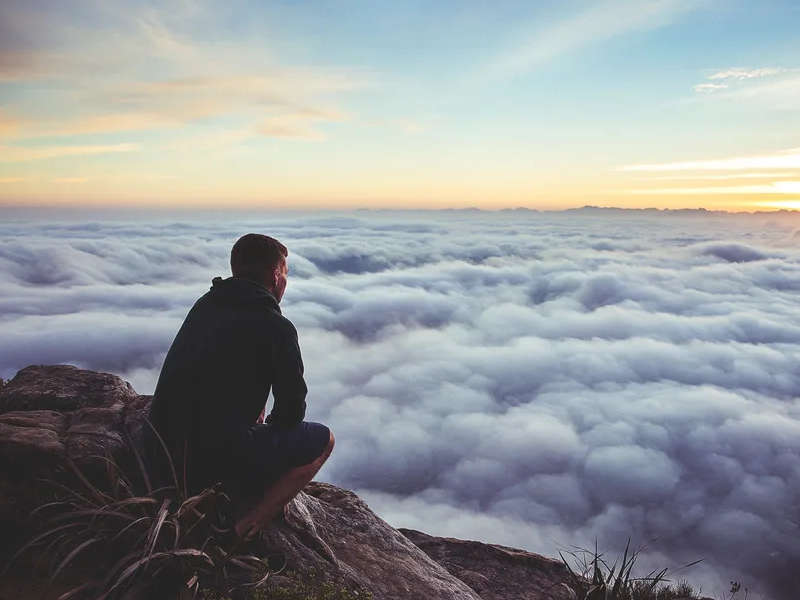Chasing Dawn at Skandagiri: A Sunrise Trek that Redefines Adventure


Nestled in the heart of Karnataka, just a short drive from the bustling city of Bangalore, Skandagiri offers an escape that blends raw natural beauty with the thrill of night trekking. Commonly referred to as Kalavara Durga, this ancient hill fortress near Chikkaballapur has become a favorite among adventure seekers, nature lovers, and photographers. What makes Skandagiri particularly enchanting is its sunrise trek—an experience that, once lived, lingers in memory as a story told with golden hues and crisp mountain air.
A Journey Beyond the Ordinary
Skandagiri isn’t just another weekend getaway; it’s a transformative journey that begins under a starlit sky and culminates with the first blush of dawn. Situated approximately 70 kilometers from Bangalore, the trek offers a moderately challenging trail that spans about 8 kilometers round trip. Starting in the early hours of the morning—usually around 2 or 3 AM—trekkers ascend the slope with flashlights in hand, guided by moonlight, chirping insects, and the occasional rustle of nocturnal wildlife.
The path winds through rocky terrain, sparse forest patches, and the remnants of ancient stone walls—silent reminders of a bygone era. The ruins atop the hill are believed to date back to Tipu Sultan’s reign, adding a historical dimension to the expedition. Though steep in parts, the trail is manageable for beginners with basic fitness, and several licensed adventure companies organize well-guided group treks to ensure safety and support.
The Sunrise: A Reward Worth the Climb
What draws hundreds of visitors to Skandagiri every weekend is the breathtaking sunrise from the summit. As trekkers reach the peak, typically around 5:30 AM, the sky begins its slow transformation. Shades of indigo give way to amber, rose, and gold. Below, a blanket of clouds often forms a surreal ocean that engulfs the surrounding hills, creating the iconic “cloud bed” that Skandagiri is famous for.
The contrast of a warm sunrise emerging above a sea of clouds is nothing short of magical. It’s a photographer’s paradise and a moment of calm reflection for those seeking solace from city life. This visual spectacle has made Skandagiri one of the most Instagrammed trekking spots in South India, but its allure goes far beyond social media trends.
Preparing for the Skandagiri Trek
To make the most of your adventure, preparation is key. Here are some practical tips to ensure a safe and enjoyable trek:
Book in advance: The Karnataka Forest Department now mandates online registration for the Skandagiri trek. A limited number of slots are available each day to prevent overcrowding and protect the fragile ecosystem.
Wear appropriate gear: Good-quality trekking shoes, layered clothing to manage changing temperatures, and a waterproof jacket (especially during monsoons) are essential.
Carry essentials: Pack a flashlight or headlamp with extra batteries, water bottles, some dry snacks, a fully charged phone, and a small first aid kit.
Respect nature: Avoid littering, do not pluck flowers or disturb wildlife, and follow the instructions of your trek guide if you’re part of an organized group.
Best Time to Visit
While Skandagiri is accessible year-round, the ideal months for the sunrise trek are from October to March, when the skies are generally clear and the weather remains cool. The monsoon season (June to September) can make the trail slippery and increase the risk of leeches, so caution is advised.
Responsible Trekking and Conservation
In recent years, concerns about environmental degradation due to over-tourism have prompted tighter regulations. Visitors are urged to follow Leave No Trace principles and support eco-conscious trek operators. By practicing responsible trekking, participants not only preserve the natural beauty of Skandagiri but also contribute to the long-term sustainability of the region.
Local non-profits and environmental groups have been working with the Karnataka Forest Department to educate tourists and encourage conservation efforts. Participating in clean-up drives or choosing low-impact tourism operators are small steps that make a big difference.
Cultural Significance and Historical Roots
Skandagiri’s spiritual and historical resonance adds another layer to the experience. The name itself is rooted in mythology—Skanda, or Kartikeya, is a revered Hindu deity often associated with warfare and wisdom. The hill is home to the Papagni Mutt, one of the oldest mutts (monastic centers) in Karnataka, located at the base village of Kalavara. Many trekkers begin or end their journey with a visit to this sacred site.
The remnants of an old fort at the summit also speak to Skandagiri’s historical relevance during the reign of Tipu Sultan. While no longer intact, the walls and stone structures evoke a time when the hill served as a strategic military outpost.
How to Reach Skandagiri
By Road: From Bangalore, Skandagiri is about 70 kilometers north and takes roughly 1.5 to 2 hours by car. You can drive via NH44, with Kalavara village serving as the base point for the trek.
By Train: The nearest railway station is Chikkaballapur, located about 3 km from the starting point. From there, auto-rickshaws or taxis can take you to the trailhead.
By Public Transport: BMTC buses run from Bangalore to Chikkaballapur regularly. From the bus stand, local transport options are available to reach Kalavara.
Why Skandagiri Is More Than Just a Trek
For many, the Skandagiri sunrise trek is a rite of passage—an initiation into the world of trekking and outdoor exploration. It combines the thrill of night trekking, the wonder of a celestial sunrise, and a sense of accomplishment that’s hard to replicate in routine life. Whether you’re a solo traveler looking for perspective, a group of friends seeking adventure, or a couple chasing a romantic getaway, Skandagiri delivers an experience that is both intimate and grand.
Final Thoughts
Chasing dawn at Skandagiri is more than a physical journey—it’s a reminder of nature’s rhythms and our place within them. As the first rays of sun pierce through the morning mist, they illuminate not just the landscape but the inner stillness that often lies dormant beneath our daily rush.
Leave a comment